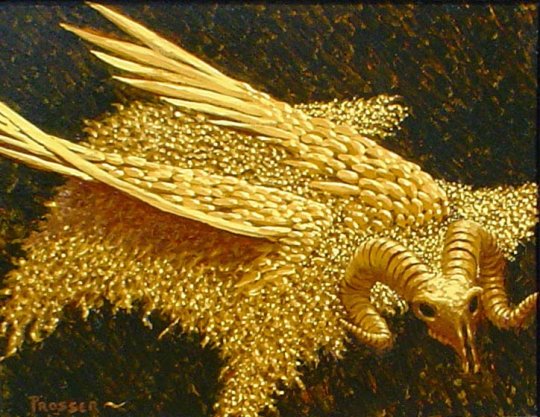

საზოგადოებრივი კოლხეთის დედაქალაქი - აია აღმოჩენილია 2018, 10 სექტემბერი, 18:52 
2018 წელს ქართველმა და პოლონელმა არქეოლოგებმა ქალაქ ქუთაისის ისტორიულ ნაწილში, გაბაშვილის გორაზე სენსაციური აღმოჩენა გააკეთეს. მათ იპოვეს დასახლება, რომელიც ჯერ კიდევ ძველი წელთაღრიცხვის მე-13 საუკუნიდან ან უფრო ადრეულ პერიოდშიც კი არსებობდა. დასტურდება, რომ ამ ტერიტორიაზე 3000 წელზე მეტი ხნის წინ იყო კოლხური დიდი დასახლება და კოლხური საამქროები. ამ აღმოჩენით დასტურდება, რომ სწორედ ამ ტერიტორიაზე კოლხეთის სამეფოს - აიას ცენტრი მდებარეობდა, რომელიც აღწერილია ბერძნულ გარდამოცემაში და ანტიკურ წყაროებში არგონავტების შესახებ. ამოღებულია უამრავი არტეფაქტი, მათ შორის ყალიბი, რომლითაც 30 საუკუნის წინანდელი კოლხები კოლხურ ბრინჯაოს ცულებს ამზადებდნენ. არტეფაქტები გამოსაკვლევად და შესასწავლად გადაიგზავნება უახლესი ტექნოლოგიებით უკეთ აღჭურვილ პოლონეთის ქალაქ ვარშავის უნივერსიტეტში. ქალაქს იცავდა თავდაცვითი თხრილი, რომელიც ასევე აღმოჩენილია. ეს სწორედ არგონავტების დროისაა. 3 ათას წელზე მეტი ხნის ახლადაღმოჩენილი დასახლება არქეოლოგების მიერ კვლავ მიწით იქნა დაფარული და ნაპოვნი ნივთები საბოლოოდ პოლონეთიდან დაბრუნების შემდგომ გამოიფინება ქუთაისის ისტორიულ მუზეუმში. ასევე დაგაინტერესებთ: იბერო-კოლხური ცივილიზაცია ავტორი: თორნიკე ფხალაძე 5119 5-ს მოსწონს |
According to the National Agency for Cultural Heritage, a team of Polish and Georgian archaeologists have unearthed a 3,000-year-old defensive trench in the city of Kutaisi. Specialists explain that the trench filled with water was a means of defending an important Colchian cultural settlement for the Late Bronze Age.
Jasek Hamburg, a person in charge of excavations at the University of Warsaw, explains that the discovery may be the first material proof that the important center of the Late Bronze Age - the Colchis civilization - really existed in this place.
According to the agency, Kutaisi is traditionally associated with the mythical Aya - the capital of Colchis, where the Argonauts came to find the Golden Fleece, although it was never approved by this science.
"The city was most probably located around Gabashvili Gori. This is where we are currently conducting excavations. Unfortunately, the surrounding terrain has been irreversibly altered by human intervention and modern construction. Therefore, the excavated trench may be the only material confirmation of the existence of an ancient city so far. The trench is quite large - 10 m wide and 6 m deep. It was used during the Bronze Age, about 3,000-3,500 years ago, as well as later, in antiquity, in the 6th - 4th centuries BC "- explains the Polish archaeologist.
"Only one such mold was found in the suburbs of Kutaisi. We also found a ceramic pipe that was used in a roasting furnace. as well as other remnants of the samples, it suggests that somewhere near this place on metal processing " - explains jasek Hamburg.
Archaeologists have unearthed a variety of Late Bronze Age pottery made in Colchis, with typical animal horn-shaped handles, as well as ancient pottery - both local and from Greece, Cyprus or Pontus - off the east coast of present-day Turkey.
Organic wastes have also been found, such as grapes and figs, cereals and other edible plants.
According to the agency, the scientist hopes that this discovery will help restore the local flora of 3,000 - 3,500 years ago, as well as the food ration of the inhabitants of ancient Colchis. Samples of materials, including fragments of wooden supports found in the trench, will be sent to Poland for further research.
The research and archeological excavations are carried out jointly by specialists from the Institute of Archeology of the University of Warsaw and the National Agency for Cultural Heritage Preservation of Georgia. The project is coordinated by the Krukowski Interdisciplinary Research Center and the Niko Berdzenishvili Kutaisi State Historical Museum with the financial support of the Polish National Fund.